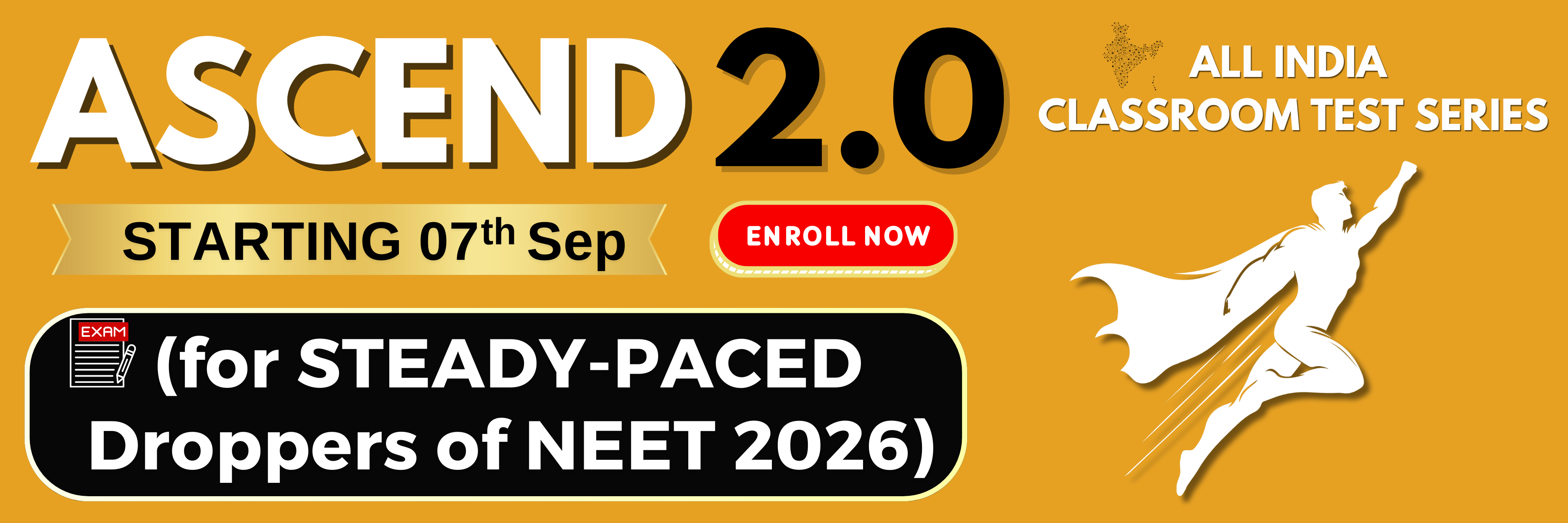Which of the following is wrong about Coelenterata?
(1) They are aquatic and exclusively marine animals.
(2) Cnidarians exhibit tissue level of organisation and are diploblastic.
(3) Some Cnidarians exhibit two forms namely Polyp and Medusa.
(4) Cnidoblasts are present on tentacles and body.
निम्नलिखित में से कौन सा सीलेन्टेरेटा के बारे में गलत है:
(1) वे जलीय और विशेष रूप से समुद्री जन्तु हैं।
(2) निडारियंस संगठन के ऊतक स्तर का प्रदर्शन करते हैं और द्विकोरकीय होते हैं।
(3) कुछ निडारियंस दो रूपों अर्थात् पॉलीप और मेडुसा को प्रदर्शित करते हैं।
(4) स्पर्शक और शरीर पर दंशकोरक उपस्थित होते हैं।
Match the following
|
1) |
Pennatula |
(i) |
sea fan |
|
2) |
Gorgonia |
(ii) |
brain coral |
|
3) |
Meandrina |
(iii) |
sea anemone |
|
4) |
Adamsia |
(iv) |
sea pen |
(1) 1-(i), 2-(ii), 3-(iii), 4-(iv)
(2) 1-(iv), 2-(i), 3-(ii), 4-(iii)
(3) 1-(iv), 2-(ii), 3-(iii), 4-(ii)
(4) 1-(i), 2-(iv), 3-(iii), 4-(ii)
निम्नलिखित को मिलाएं
|
1) |
पेनेटुला |
(i) |
समुद्री पंखा |
|
2) |
गोरगोनिया |
(ii) |
मस्तिष्क प्रवाल |
|
3) |
मेन्ड्रिना |
(iii) |
समुद्री एनिमोन |
|
4) |
ऐडैम्सिया |
(iv) |
समुद्री पिच्छक |
(1) 1- (i), 2- (ii), 3- (iii), 4- (iv)
(2) 1- (iv), 2- (i), 3- (ii), 4- (iii)
(3) 1- (iv), 2- (ii), 3- (iii), 4- (ii)
(4) 1- (i), 2- (iv), 3- (iii), 4- (ii)
Meandrina which is also known as Brain Coral is a
(1) Poriferan
(2) Coelenterate
(3) Echinoderm
(4) Mollusc
मेन्ड्रीना जिसे मस्तिष्क प्रवाल के नाम से भी जाना जाता है,एक............है।
(1) पोरिफेरा
(2) सीलेन्टरेट
(3) एकाइनोडर्म
(4) मोलस्क
Which of the following cnidarians are radially symmetrical and sessile?
(1) Hydra
(2) Aurelia
(3) Adamsia
(4) Both (1) and (3)
निम्नलिखित में से कौन सा निडारियंस अरीय सममित और स्थानबद्ध है?
(1) हाइड्रा
(2) औरीलिया
(3) ऐडैम्सिया
(4) (1) और (3) दोनों
Hermaphroditism is found in which phyla?
(1) Ctenophora
(2) Platyhelminthes
(3) Porifera
(4) All of these.
उभयलिंगता कौन से संघ में पायी जाती है?
(1) टीनोफोरा
(2) प्लेटीहेल्मिथीज
(3) पोरीफेरा
(4) ये सभी
Match the following cells/structures with their phyla of origin
|
1) |
Flame cells |
(i) |
Coelenterata |
|
2) |
Choanocytes |
(ii) |
Platyhelminthes |
|
3) |
Cnidocytes |
(iii) |
Ctenophora |
|
4) |
Comb plates |
(iv) |
Porifera |
(1) 1-(i), 2-(iv), 3-(ii), 4-(iii)
(2) 1-(iii), 2-(ii), 3-(iv), 4-(i)
(3) 1-(ii), 2-(iv), 3-(i), 4-(iii)
(4) 1-(ii), 2-(iii), 3-(i), 4-(iv)
निम्नलिखित कोशिकाओं/संरचनाओं को उनकी उत्पत्ति के संघ से मिलाएं।
|
1) |
ज्वाला कोशिकाएं |
(i) |
सीलेन्टरेटा |
|
2) |
कीप कोशिकाएं |
(ii) |
प्लेटीहेल्मिथीज |
|
3) |
निडोसाइट |
(iii) |
टीनोफोरा |
|
4) |
कंकत पट्टिका |
(iv) |
पोरीफेरा |
(1) 1- (i), 2- (iv), 3- (ii), 4- (iii)
(2) 1- (iii), 2- (ii), 3- (iv), 4- (i)
(3) 1- (ii), 2- (iv), 3- (i), 4- (iii)
(4) 1- (ii), 2- (iii), 3- (i), 4- (iv)
Digestive system consists of a mouth and anus in which animals
(1) Ancylostoma
(2) Wuchereria
(3) Adamsia
(4) Both (1) and (2)
किन जंतुओं में पाचन तंत्र में एक मुंह और गुदा होते हैं?
(1) ऐन्किलोस्टोमा
(2) वुशेरेरिया
(3) ऐडैम्सिया
(4) (1) और (2) दोनों
A high regeneration capacity is present in
(1) Planaria
(2) Ancylostoma
(3) Sepia
(4) Sea cucumber
एक उच्च पुनरुद्भवन क्षमता................. में उपस्थित होती है।
(1) प्लैनेरिया
(2) ऐन्किलोस्टोमा
(3) सीपिया
(4) समुद्री खीरा
Limbs are present in
(1) Osteichthyes
(2) Chondrichthyes
(3) Reptiles
(4) urochordates
..............में पाद उपस्थित होते हैं।
(1) ऑस्टिक्थीज़
(2) कॉन्ड्रिक्थीज़
(3) सरीसृप
(4) यूरोकोर्डेटा
Which of the following is a jawless vertebrate?
(1) Petromyzon
(2) Hagfish
(3) Myxine
(4) All of the above
निम्नलिखित में से कौन सा एक जबड़े रहित कशेरुक है?
(1) पेट्रोमाइज़ॉन
(2) हैगफ़िश
(3) मिक्साइन
(4) उपरोक्त सभी







